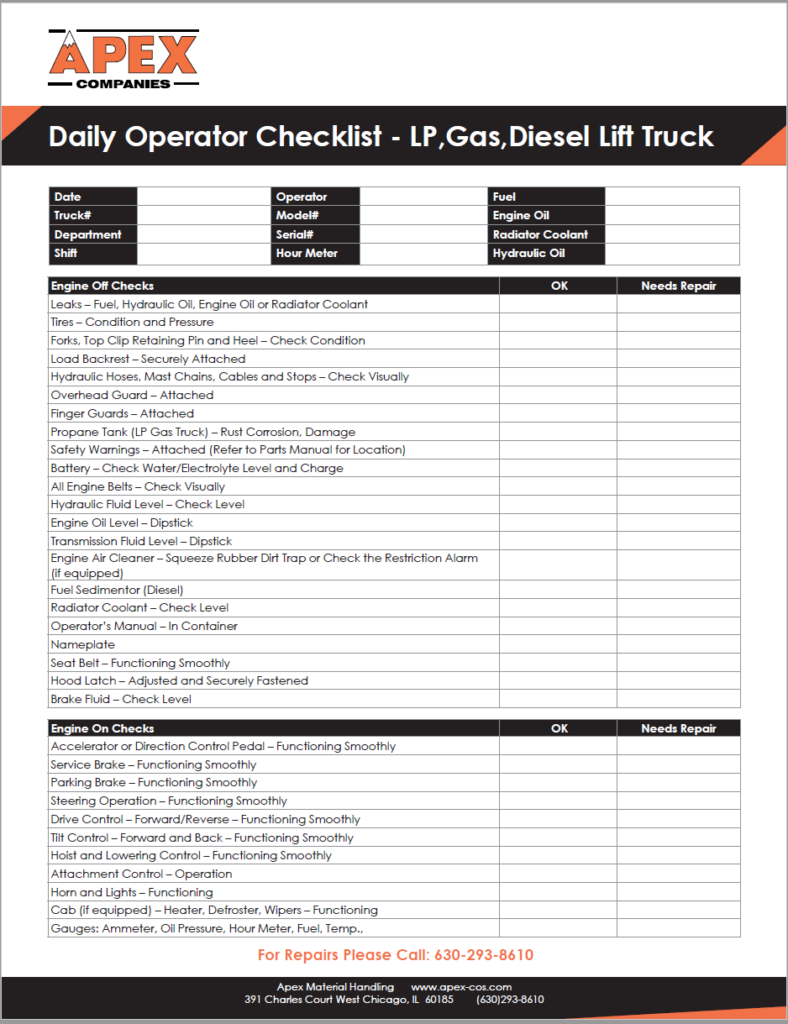In the realm of occupational safety, managing the operation of powered industrial trucks (PITs) is paramount. For organizations seeking to establish a robust PIT safety program, a well-structured template can provide a solid foundation.

The development of a comprehensive powered industrial truck program template encompasses a range of essential elements, including policy and procedure development, risk assessment, training and evaluation, and effective communication. This article explores each of these components in depth to guide you in creating a robust and effective PIT program template for your organization.
Policy and Procedure Development
A cornerstone of any effective PIT program template is a clearly defined set of policies and procedures that outline the organization’s expectations for safe PIT operation. These policies should establish guidelines for:
- PIT operator training and certification
- Regular PIT inspections and maintenance
- Incident reporting and investigation
- PIT traffic control and pedestrian safety
- Emergency response and evacuation procedures
By establishing comprehensive policies and procedures, organizations can provide a clear roadmap for safe PIT operation, ensuring that operators are well-informed and accountable for their actions.
Risk Assessment and Site Evaluation
A thorough risk assessment is crucial for identifying potential hazards and mitigating risks associated with PIT operation. Through site evaluations and hazard analysis, organizations can pinpoint areas where accidents are likely to occur and develop targeted interventions to address those risks.
The risk assessment should consider factors such as:
- Layout and design of the facility
- Volume and type of PIT traffic
- Work practices and employee behaviors
- Potential interactions between PITs and pedestrians
- History of incidents and near misses
By conducting a comprehensive risk assessment, organizations can prioritize safety measures and allocate resources effectively to minimize the likelihood of PIT-related accidents.
Training and Evaluation
Effective training is essential for ensuring that PIT operators possess the necessary knowledge and skills to operate these vehicles safely. Organizations should develop training programs that cover:
- PIT basics and safety features
- Safe operating techniques
- Emergency procedures
- Site-specific hazards and risk assessment
- Refresher training and evaluation
Regular evaluation of operator performance through written tests, practical assessments, and observation helps organizations assess the effectiveness of training and identify areas for improvement.
Communication and Incident Management
Effective communication is vital for disseminating safety information and ensuring that all employees are aware of PIT safety protocols. This includes:
- Regular safety meetings and training sessions
- Distribution of safety bulletins and notices
- Display of safety posters and signage
- Open communication channels for reporting concerns
- Prompt investigation and reporting of incidents
By fostering a culture of open communication, organizations can create a supportive environment where safety concerns are addressed proactively and lessons learned from incidents are shared to prevent recurrence.
In summary, developing a robust powered industrial truck program template requires a comprehensive approach that encompasses policy and procedure development, risk assessment, training and evaluation, and effective communication. By implementing these elements, organizations can establish a strong foundation for safe PIT operation, minimize risks, and protect their employees from potential accidents and injuries.